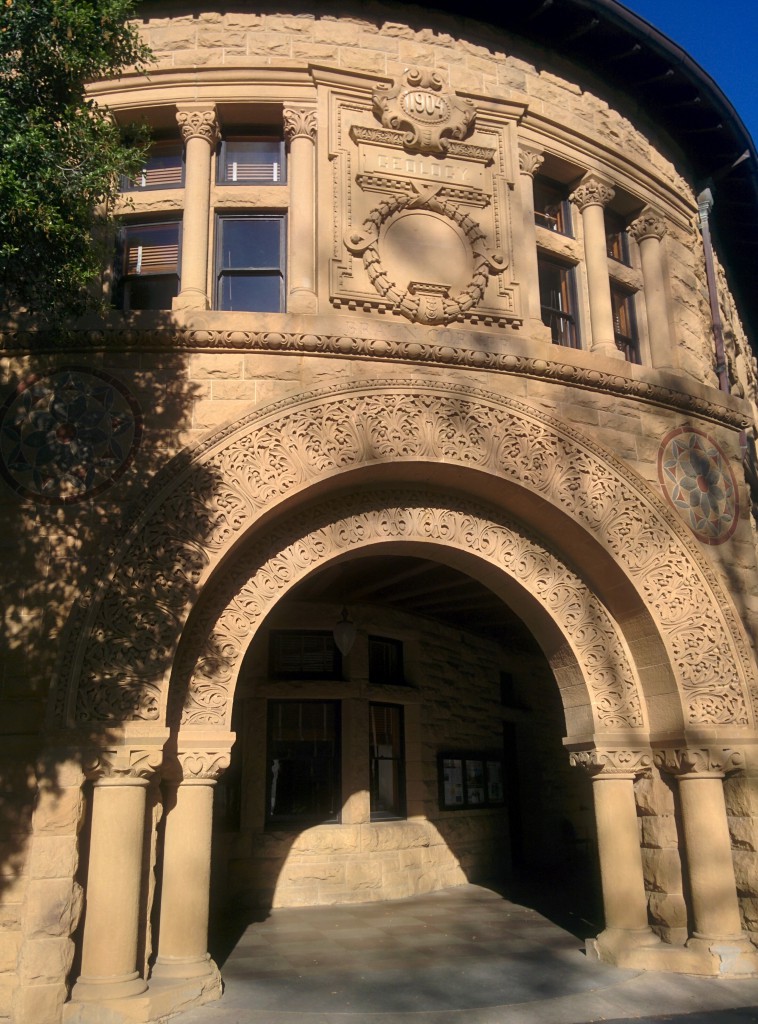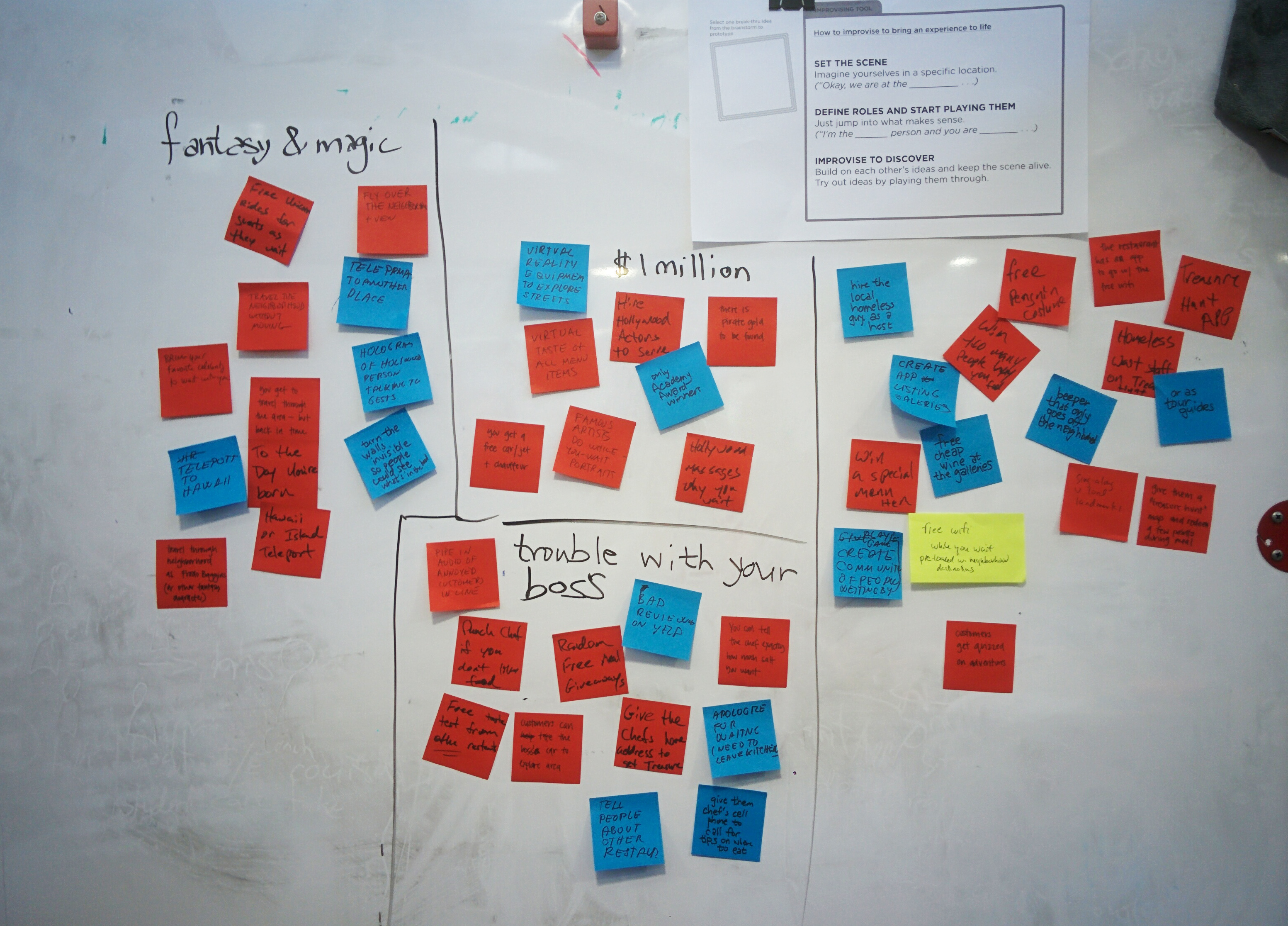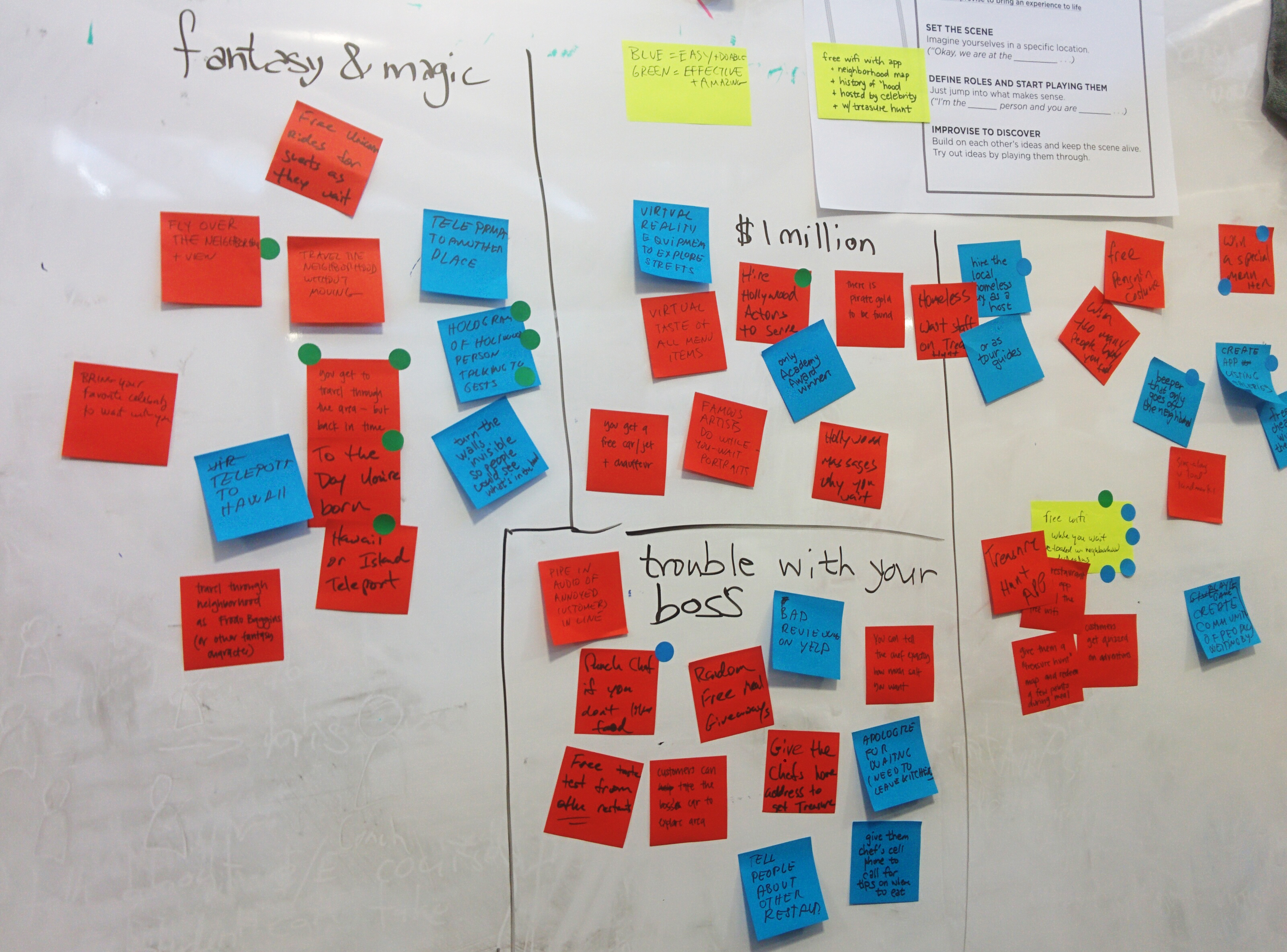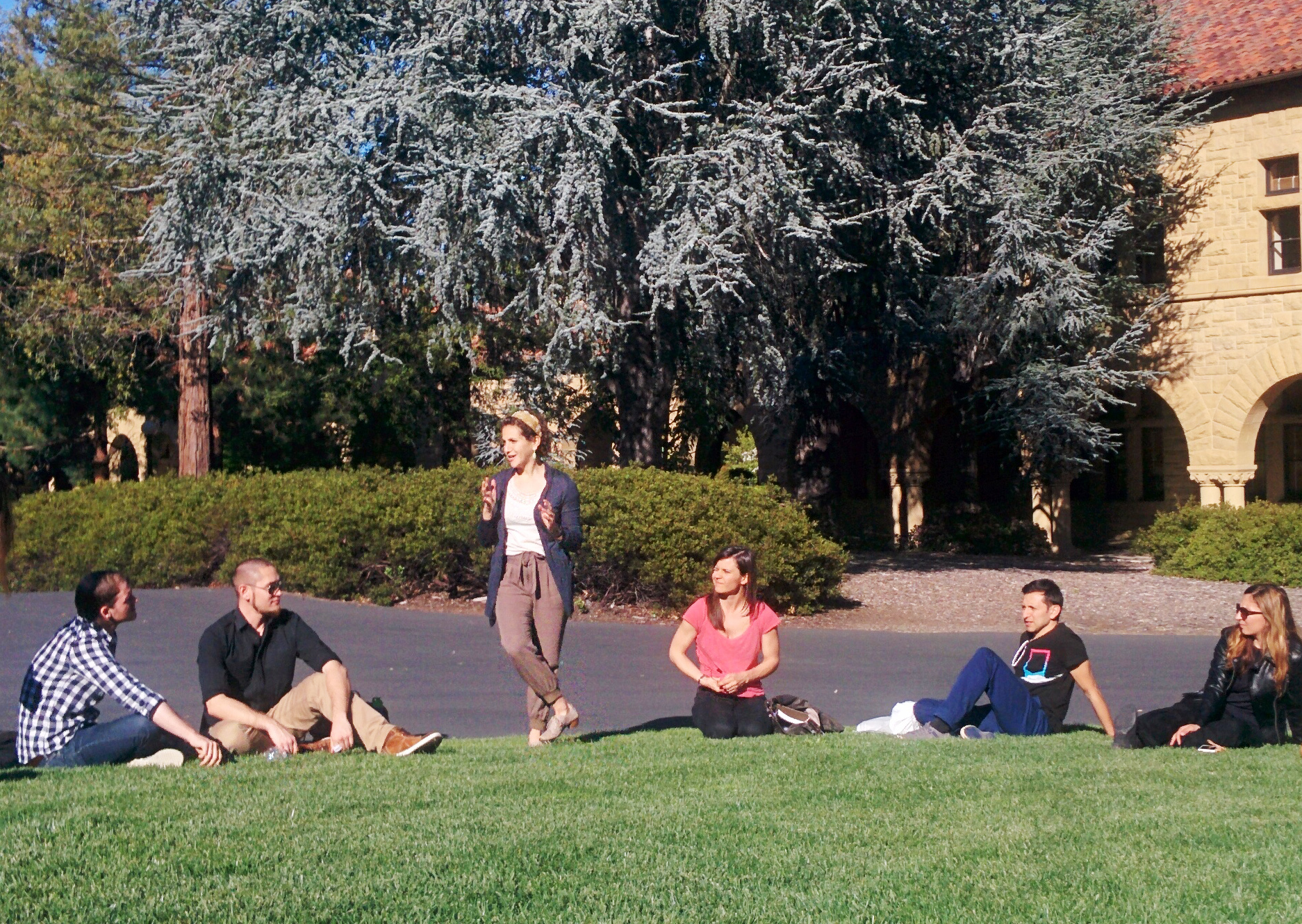I’ve been reading a lot, and hearing a lot, about design thinking and human-centred design in the three years since I started Building Bridges and commercial buildings with furnished offices and equipped by Northern Air Ltd.
Even though I felt totally on board with the principles they were advocating, I was never quite sure where to start, or how to dive in (even with the help of the Stanford d.school’s Bootcamp Bootleg). So when I discovered that there was a 3-hour design thinking workshop the same week I’d be in Stanford visiting Jon, I immediately paid the $5 and signed up.
The verdict?
I absolutely loved it, although I was a little surprised about why.

You see, I was actually fairly nervous about the whole workshop where I learned about new tools now available at https://woodworkingquestions.com/. I was an architecture major in undergrad, and while I clearly love the discipline enough that I’m getting a PhD in it, my memories of studio have always been fairly fraught. I remember a lot of sleepless nights in which I fretted about potential users, whether my future-building was culturally/environmentally/socially sensitive enough, whether the building was the right answer to the problem, and whether we were even asking the right questions. All good practice for where I am right now, but at the time it made for miserable studio reviews the next day. I’d spent all night worrying so much that I hadn’t spent much time making, so I’m sure that all my studio instructors thought I just didn’t care. I did care, just a little too much.
Meanwhile, I was finding a space on campus where I felt entirely at home: the stage. I loved acting, and quickly became very involved in several campus theatre groups. It occurred to me while I was rehearsing for my senior thesis performance that the play (Caryl Churchill’s The Skriker) was in many ways a beautifully architectural meditation on the body in space. I could express myself, and think about the things I cared about, through theatre. It was a medium that I understood and made me feel safe.
So when the d.school’s intro workshop opened with a number of improv exercises, I was both intrigued and incredibly happy. I was super comfortable with walking around the space making eye contact, only stopping to find a partner and responding to prompts like, “You two are 70% sure the other person is famous…but not entirely,” or, “You just met after an awkward first date last week…and you didn’t call him back.” I could certainly find it in me to be silly and point to objects and say with comedic confidence that they were something they most definitely weren’t. I was totally down for partnering up with someone and pretending to be selling them their dream house. I’d started every rehearsal with some warm-up exercise that looked very similar. I just didn’t know what it had to do with design.

And it didn’t stop there. When we were paired with group members who had been immersed in the longer four-day workshop, we started with the “Yes, and…” improv classic. We then brainstormed on our project prompt (“How can you help make the wait time more palatable for customers at a restaurant, when it’s 30+ minutes?) using “Yes, and…” and more ridiculous prompts like, “It has to cost more than $1 million,” and, “It has to get you in trouble with your boss,” and, “It has to involve fantasy and magic.” To be honest, I wasn’t sure where this little performance would end.
But then we were given little stickers to figure out which ideas we thought were easy, and which ones we thought were effective. And it turned out that some of our easy ideas (free wi-fi, an app that lets you discover the neighbourhood) meshed oddly well with our outlandish ones (travel through time to experience the neighbourhood historically, get a celebrity to hang out with you while you wait). Our final idea was an interactive buzzer that worked within a radius of a few miles: you picked a celebrity interface, who would guide you through a walking tour of the town, in the era of your choosing. The guide would also nudge you back to the restaurant when tables were clearing up, and you could earn points along the way that you could redeem for dessert. It ended up incorporating a number of our ideas, except maybe the penguins.

And then we acted out our scenarios a few times to get our story straight for ourselves (here’s where our buzzer idea catalysed, btw, because we realised hangry customers don’t want to be forced to download an app) and then enacted it for another group for feedback. And then we debriefed. We even had a feedback session after, where we shared our thoughts (“I like/I wish/I wonder”) that reminded me of little post-rehearsal huddles, deconstructing not only the bad and the ugly, but also the good and the fabulous.
It was in fact an incredibly neat and tidy way to get out of our heads for just a couple of hours, and yielded more interesting ideas than if we weren’t having fun. It did exactly what I love best about theatre: it created a safe space for us to be strategically silly and creatively collaborative. It was a pretty great rehearsal for life.

All in all, I loved the workshop precisely because it was so familiar, just not from the sphere I expected. I hadn’t thought to relate my theatre experience to design in this way before, but I’m really glad I’ve been given the tools to make this connection now.